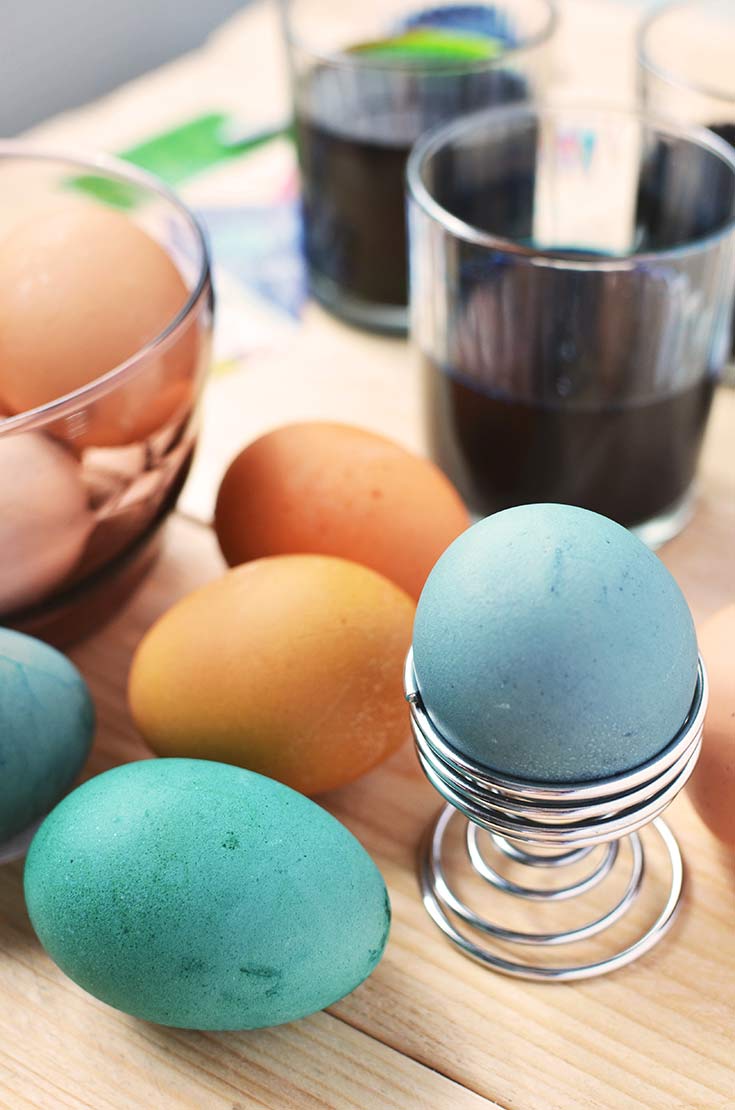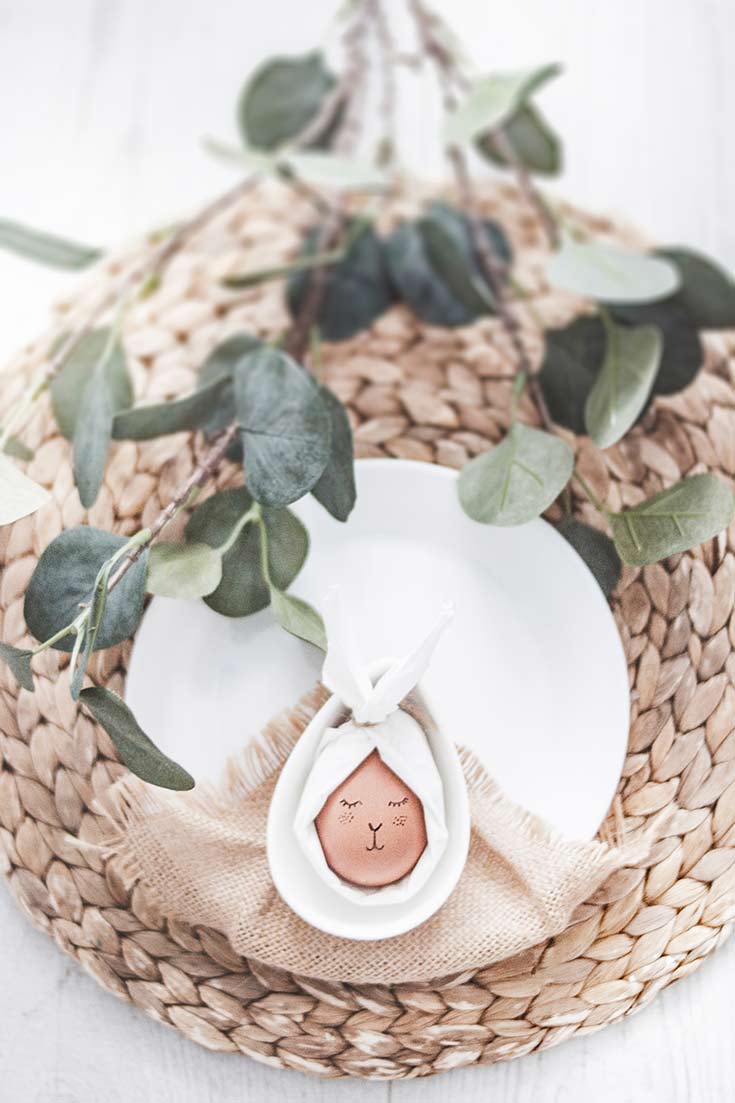DIY Guide: Natural Easter Egg Dye with Everyday Ingredients.
Natural Easter egg dye is one of the simplest, most natural, and clean ways you can dye eggs this year.
Naturally dying your Easter eggs is the best way to make this fun Easter tradition environmentally friendly as well as conducive to a clean eating lifestyle. After all, dyes and chemicals are something I avoid in my life and on this blog. So why would dying eggs be any different? With Easter so close to Earth day this is a great opportunity to make, clean, eco-friendly choices when celebrating by reducing your family’s exposure to harmful chemicals and artificial food dyes. Not only is dying easter eggs naturally the best option for your family and the environment it is also very easy to do.

How To Get Natural Egg Dye To Stick
The trickiest part about using natural egg dyes for Easter is that sometimes the dyes do not want to stick to the eggs. Just like with dying fabrics and yarn, it is best to prepare your eggs for dying so the dye is likely to stick. Giving your eggs a quick rub down with diluted vinegar can help make the dye stick to your eggs by clearing away a thin layer of the shell opening making it more likely to absorb the dyes. Adding vinegar to your natural dyes as well can help make your natural dyes stick to your Easter eggs.
How To Get Different Shades When Using Natural Easter Egg Dye
Getting different shades when dyeing Easter eggs is easier than you think. There are three things that can affect the shade of your naturally dyed eggs. The concentration of the dye is an easy-to-control factor.
For darker eggs, you can add more of the plant you are using to create your dyes. Double the ingredients with the exception of water and vinegar. For lighter eggs opt to water down your egg dyes but be careful to not overly dilute them.
The best way to get lighter shades when dyeing Easter eggs is to pull the eggs from the dye quickly giving the dyes less time to absorb. For darker eggs, you can leave your eggs in the dye for a longer period of time.
White eggs are most often used for dying Easter eggs as they allow the full vibrancy of the dyes to shine. For more vintage hues swap out the traditional white eggs for richer brown eggs that add a sepia undertone to your favorite easter egg colors.

What Foods Make Your Favorite Natural Easter Egg Dye Colors
Naturally dyeing easter eggs can be a lot of fun. Children love the experience of turning everyday foods into dyes and watching their masterpieces come to life. This is a great opportunity to do some scientific observation while enjoying the spring holiday break.
- Brown is one of the simplest dyes to make at home. Soaking eggs is a strong brew of coffee with a tablespoon of vinegar that will leave you with the perfect brown eggs. For texture leave the coffee grounds in the dye and allow any that come out of the cup of dye to remain on the egg until dry.
- Red and pink Easter eggs can be made by boiling the skins of 2 – 3 red Spanish onions in one cup of water and one tablespoon of vinegar. For pink eggs add more water after creating your dye and pull your eggs quickly to remove them at a lighter shade.
- Yellow is such a bright and cheery color for Easter eggs. For a bright yellow that sticks well to eggs use 3 teaspoons of turmeric powder in 1 cup of water and bring to a simmer until the turmeric is dissolved. For a brighter yellow add a teaspoon of vinegar to help the dye stick to the eggs.
- Green is very easy to do. 2-3 teaspoons of spirulina powder dissolved in 1 cup of hot water or one dose of chlorophyll concentrate in a cup of water is a quick and easy way to dye green Easter eggs.
- For the best orange, you can use 2 teaspoons of chili powder in one cup of boiled water simmering until dissolved. Another option for a more burnt orange is to combine the skins of 2-3 large yellow onions and ½ teaspoon turmeric in one cup of water and bring to a simmer.
- The easiest way to get beautiful purple Easter eggs is by using blackberry juice. Blackberry juice without any additives will give you a deep purple rather quickly. For a lighter more burgundy shade you can boil 1 cup of shredded beats in 1 cup of water to make a deep reddish-purple.
- For beautiful blue eggs, you can use blueberries. Ring a handful of blueberries to a boil in a pot mashing as they cook. Stir and strain your dye. Another great option for a pale blue is to boil red cabbage with ½ teaspoon of baking soda to change the color from purple to blue.
For best results allow your eggs to dry before storing. Just like with other dyes, the dye will change in color over time so if you plan to use your naturally dyed eggs as decoration dye them close to when you plan to use them so the humidity of the refrigerator doesn’t affect their appearance.

